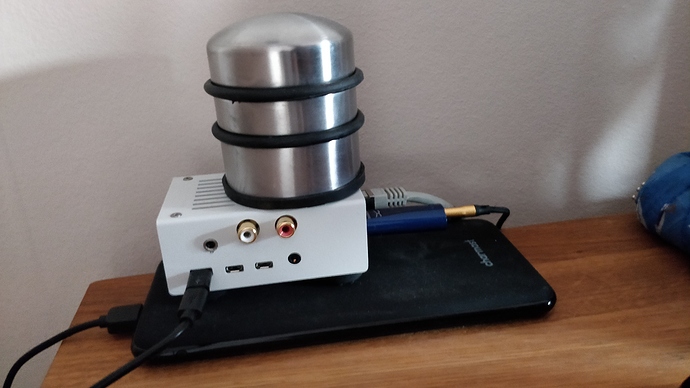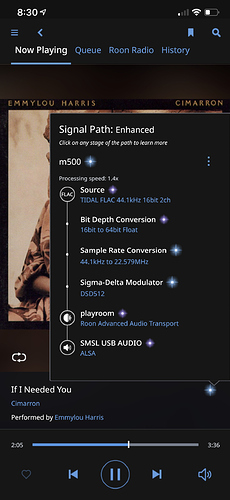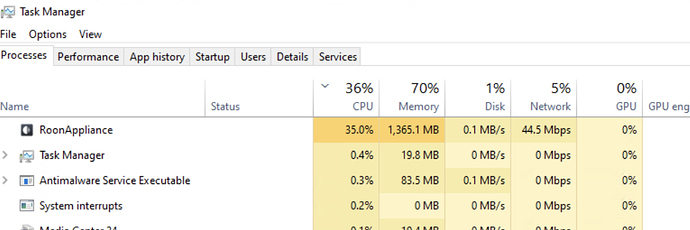I leave my Pi 4 on all the time.
I always keep all my Linux boxes running, but the Pi is in our living room so the LEDs are disturbing. I had a microRendu in this spot before. No LEDs and no problem…
Can you turn it around or block it with something? I think RopieeeXL allows you to turn off the blinking lights IIRC.
This is what black electrical tape is sold for.
There is a setting in XL for this, but the LEDs are still active.
I’ll do that as soon as the Pi 4 arrives and gets mounted in the Flirc cabinet.
I’m using the Flirc case and mine never goes much above 39º using Ropiee into the Mojo - what’s the battery pack you are using @Simon_Arnold3? Just ordered another Pi4 for headphone duties and that idea sounds very interesting 
This one. It’s pretty big but thin, my pi’s sit on top of it.
It’s all normally hidden behind a photo so it’s never seen.
26800mAh Power Bank USB C Battery Pack Portable Mobile Charger Slim Type C Power Pack with 3 Input & 4 iSmart Output for MacBook Nintendo Switch iPhone iPad Samsung Huawei (Black) https://www.amazon.co.uk/dp/B073FJ9X2J/ref=cm_sw_r_cp_apa_i_Z9LqEbWXEDTYZ
Powerbanks are quite notable sources of RFI/EMI, as they contain oscillators and switching power supplys. Still, there are many people that prefer them over traditional power supplys, whether these are linear or switched.
Why is that? Are they “better” than power grid attached PSUs or simply different?
A couple of links:
To me it sounded better with the power bank. Cleaner and better bass.
In my experience, power banks sounds better than cheap 5v switched power (like the ones you would typically use with a Raspberry), but batteries with a linear power regulator or a good LPS sounds much better.
Got my Flirc case for the pi4. Keeping it way cooler. So a happy camper and I swear it sounds better ![]()
Looks a bit worrying? Should we not use power banks to power audio devices then? (I’m thinking of getting one for charging the phone when I go camping anyway so thought I would give powering the Pi4 a try?)
And therein lies the dilemma, these units are built for use as chargers, not power supplys.
I use one myself, to power my Pi 2B with a Sabreberry HAT and i haven’t noticed any negative aspects of this. It works fine and powers the Pi/HAT for many, many hours. I wouldn’t worry too much. 
I haven’t got any gear to measure power output/noise while it does it’s duties though, which would be quite interesting.
These settings in config.txt on the ropieee SD card turns off all LEDs on a Pi4. One of the settings was there already (I don’t remember which one). Requires a reboot (or two) to get it working.
#Disable LED
dtoverlay=act-led
dtparam=act_led_trigger=none
dtparam=act_led_activelow=off
dtparam=pwr_led_trigger=none
dtparam=pwr_led_activelow=off
#Turn off ethernet port LEDs
dtparam=eth_led0=4
dtparam=eth_led1=4
Ah, spoke too soon! Ethernet LEDs came back on after a few seconds. Power LED is still off though…
Help @spockfish ![]()
I feel like such a fool. I’m so embarrassed that it’s taken me several days to get back on here to share this, but I now realize the Pi 4 is completely unnecessary.
After building the underclocked Pi 4 and connecting it to an SMSL M500, I started playing around with the DSD upsampling in Roon. I realized that my core machine is fast enough to do DSD256 reliability. (It will do DSD512, as shown in the screenshots below, but it was hit or miss.)
Happy with the Pi 4 setup, I decided to grab the Pi 3B from my son’s playroom system just to compare & prove how much better the Pi 4 was performing… To my surprise, the Pi 3B could handle DSD256 just as well. No pops, no clicks, no dropouts, no problems at all. After listening a while, I remembered that WiFi was still enabled on the 3B. I turned that off, and the result was the same, DSD256 worked just great. This whole Pi 4 exercise was pointless.
I had read on so many different places that the Pi 3 couldn’t do hi-res with a USB DAC that I just accepted it as true. Maybe there has been a software update that manages traffic better, or maybe there was some problems in the network hardware of all those early reviewers, but I’m here to tell you: There’s nothing about the hardware of the Pi 3B (not plus) that prevents it from serving hi-res (up to DSD 256, at least) to a USB DAC. I’m sorry I didn’t test that first. I could have saved myself $77 and lots of tweaking.
Add images
How would you compare the two sonically?
That is difficult for me to say. I had a mR 1.4 in front of a Mutec MC-3 feeding a Devialet 250CI. I’ve sold all of that and even changed to different speakers (active Tannoy Gold 8) so the Pi4 is used in a completely different system. All I can say is that the Pi4/Ropieee is stable and dependable, similar to the mR.
Thank you very much 


